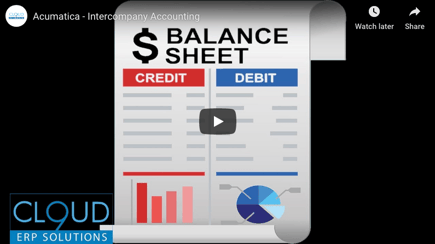5 Best Practices for Intercompany Accounting

Friends who go out to eat often split the check. “You ordered the chicken. You owe me ten bucks…” and so forth. Businesses have a similar process. It’s called intercompany accounting. Instead of figuring out who owes what for the chicken, but not the drinks, companies often have separate business units paying for things and accepting payment on behalf of other business units.
What is Intercompany Company Accounting?
Intercompany accounting is an accounting practice that is required when a financial transaction crosses between two separate entities with a common owner. It could be between different branches of a business or between a company and subsidiary. It could even occur between two different operating groups, e.g. the warehouse and the showroom—if each has its own separate Profit and Loss (P&L) statement.
Accountants need intercompany accounting because each P&L needs to accurately reflect the financial results of its respective business entity. This is necessary for tax reporting reasons as well as for managers, who want to know how each entity is performing. For example, if the warehouse pays for a shipment of supplies that are then shipped to multiple branch offices, it’s not actually a warehouse expense. The warehouse just made the payment.
The branch offices should book the expense on their general ledgers, even though the warehouse cut the check and it shows up on their ledger as an expense. Intercompany accounting, as facilitated by accounting software, enables an accounting staffer to set up a “due to” and “due from” pair of matching journal entries that move the expense from the warehouse to the branch offices.
Intercompany Accounting Best Practices
The challenge with intercompany accounting is only partly about the bookkeeping techniques involved. That requires making sure that system users understand how to book intercompany transactions correctly. What’s arguably more important are the “soft” issues that surround the process. The following best practices highlight the importance of process, people and organization in the realization of effective intercompany accounting:
1. Get together and make decisions
Nearly every aspect of intercompany accounting involves people from different businesses coming to an understanding about a variety of rules and procedures. For example, intercompany accounting functions enable account-based controls, i.e. defining which accounts allow inter-company transaction accounting. The balance sheet account may allow it, but not others. Everyone connected with this setup needs to be consulted and should agree to way it will work.
2. Create roles and groups of users with specific access privileges
For intercompany accounting to work, it’s a best practice to assign roles and groups that allow for access to specific companies and the associated transactions. Again, this is a step that should ideally be taken after discussion and agreement among the people and companies involved. At the very least, this will reduce confusion on how it works.
3. Centralize purchasing and invoicing
One of the great benefits of intercompany accounting is its ability to lower overhead by centralizing financial activities like purchasing and invoicing. Rather than having each business unit perform these operations separately, which is duplicative and inefficient, with intercompany accounting it’s possible to have a single business unit do it all and then assign transactions to each relevant entity as needed. Achieving centralization might require integration of the intercompany feature with the Accounts Payable (AP), Accounts Receivable (AR) and Sales Order Management (SO) modules.
4. Don’t forget assets
Intercompany accounting can deal with asset transfers between entities.Integrate intercompany accounting with your system’s Fixed Asset (FA) management module. This allows the assigning and tracking of fixed assets to specific companies. An asset’s depreciation and purchase history moves with it when it’s transferred.
5. Generate detailed reports
Modern accounting systems offer rich reporting and data visualization features. It’s a good practice to take advantage of this functionality to report regularly on intercompany accounting activities. For instance, each business unit’s P&L could highlight the proportion of their income an expense that are derived from intercompany transactions. Having this information could help senior managers made decisions about staffing, business processes and so forth related to multiple entities.
Acumatica Intercompany Accounting
With the help of Acumatica Intercompany Accounting, it is not hard to do. It takes some focus and willingness to gather input from multiple stakeholders. After that, it’s a matter of configuring the software and making sure everyone is properly trained.
Acumatica Intercompany Accounting lets you automate financial reporting, inventory transfers, vendor, payments, cash management, and inter-company transfers across multiple related companies. To learn more, watch our Acumatica Intercompany Accounting Demo.
Additional ERP Resources
Using ERP to Break Free From the Excel Trap
What's New in Acumatica 2019 R2
Are You Getting the Right Insight From Your ERP? What to Look For




